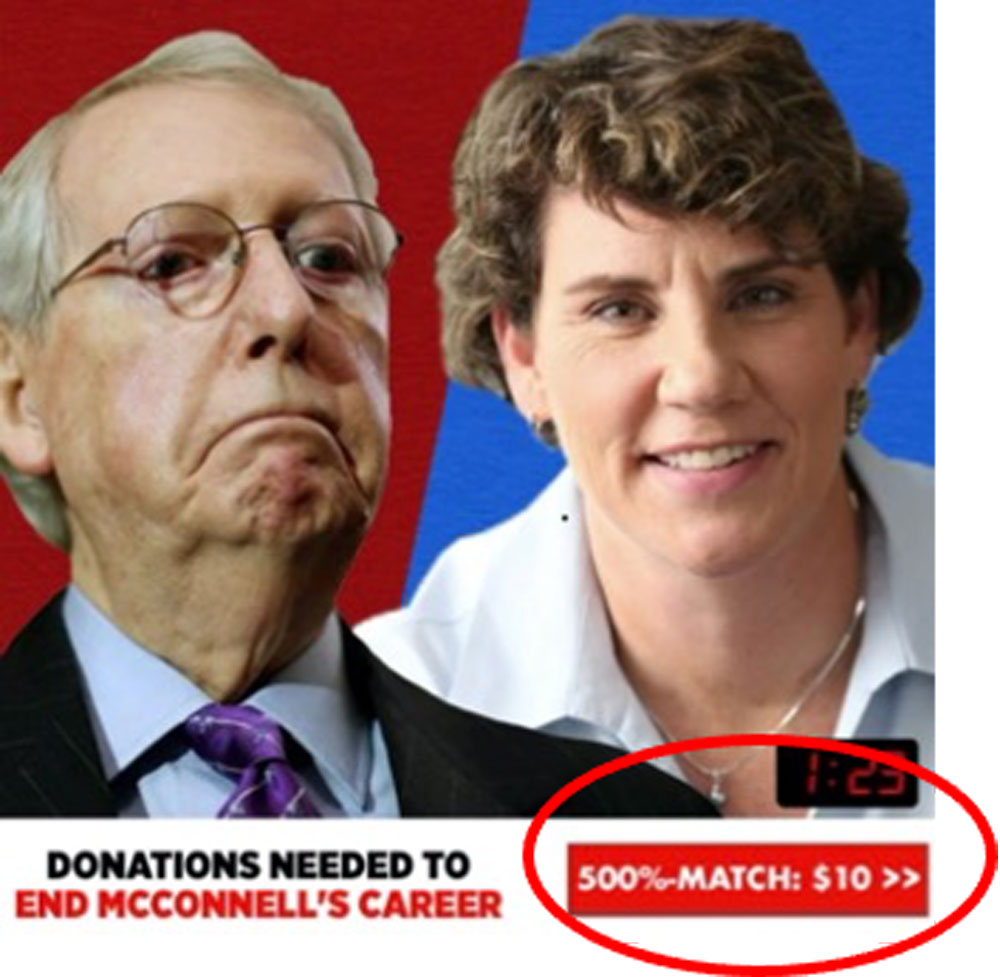
In early October, Donald Trump’s fundraising campaign promised supporters their gifts would be matched at a rate of 825 percent. Articles and newswires quickly followed, debunking the claim, with some casting doubt on the larger practice of matching gifts. The subhead to Mother Jones’ post read: “Most offers of matching campaign donations aren’t real, but this one really seems like it isn’t.”
Lavish matching gift promises are not a partisan ploy. In a recent Facebook post, a fundraiser for Democratic Senate candidates offered a 500-percent match. And a recent study by researchers at Princeton University reported that 13,000 of the 100,000 political fundraising emails analyzed from this election cycle contained some claim of a donation match.
But popularity does not translate to efficacy—and nonprofit fundraisers considering similarly extravagant invitations should reassess:
Sign up for our free newsletters
Subscribe to NPQ's newsletters to have our top stories delivered directly to your inbox.
By signing up, you agree to our privacy policy and terms of use, and to receive messages from NPQ and our partners.
- Donors view these matching gift claims as deceptive. And in political fundraising, they often are. Political and philanthropic fundraising adhere to different rules. In political fundraising, there are limits to the amount an individual can give—making the concept of a single matching donor difficult to verify at best, and obviously insincere at worst. Misleading matching appeals have consequences. They diminish donors’ trust in an organization, and mar perceptions of the tactic at large.
- In the realm of philanthropic giving, behavioral economists have illustrated through field studies that larger match ratios (e.g., a 3:1 match) do not generate superior results to smaller match ratios (e.g., a 1:1 match).
Matching and Challenge Gifts Done Right
In a matching gift, the donor agrees to give a set amount for each gift given by others—perhaps dollar for dollar—up to a predetermined limit. This can be a good tactic to recruit new donors or upgrade current ones, especially if the match qualifies for donor recognition levels. And the organization is guaranteed to receive at least a portion of the matching gift, even if they don’t hit the full target. But the credibility of matching gifts is undermined when there is a strong suspicion that the donor will make the entire gift regardless of the success of the match.
A challenge gift is a lump sum, to be given when the fundraising campaign hits a pre-established target. This can be appealing to large-dollar donors who want to be sure that their extraordinary gift doesn’t dissuade others from donating. For example, when a group of local citizens wanted to create a new children’s museum in Northwest Arkansas, a large family foundation agreed to give half of the projected $20 million cost, but only when the organizers had raised the first $10 million. As a result, the organization engaged a broad group of supporters who have continued their support as members and donors. But there’s greater risk; had they failed to reach the target within the specified time period, they may have gotten nothing from the challenge grant donor.
Matching and challenge gifts have the potential to create a mutual relationship between large and small donors, helping to restore some of the imbalance that has emerged in philanthropy. They can be an effective tool for engaging major donors, rallying grassroots supporters, and pushing a fundraising campaign over the finish line. But for donors to embrace a match opportunity, strategies must be grounded in research and authenticity. For example…
- Major donors should be encouraged to make commitments unconditional—designed to inspire, rather than set rates and rules for unlocking their funds. Research shows that challenge (unconditional) gifts are more effective than matching (conditional) gifts.
- Results—and transparency—are served by identifying the specific, credible donor (or donors) who are funding a challenge or match. Studies have yielded fascinating results, here: “A charity focusing on poverty reduction solicited donations from prior donors and either announced a matching grant from the Bill and Melinda Gates Foundation, or made no mention of a match….Providing a credible quality signal by identifying the matching donor generates even more and larger donations than not naming the matching donor.”
- Honesty and authenticity uphold the integrity of matching gifts and promote legitimate appeals. Spurious matching gift claims run the risk of further diminishing the percentage of households that participate in philanthropy.
Matching and challenge gifts have the potential to create a mutual relationship between large and small donors. Done right, they just might help to restore some of the undemocratic imbalance that has emerged in philanthropy.








